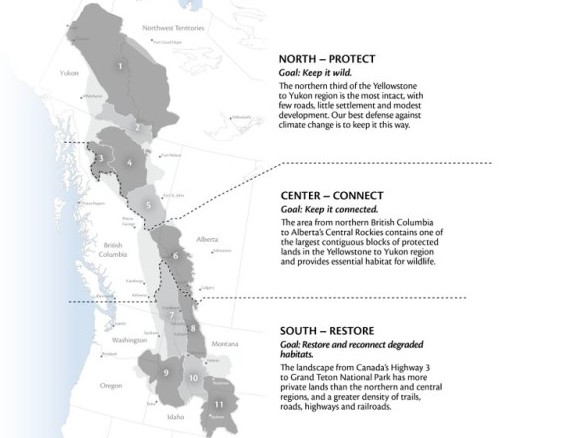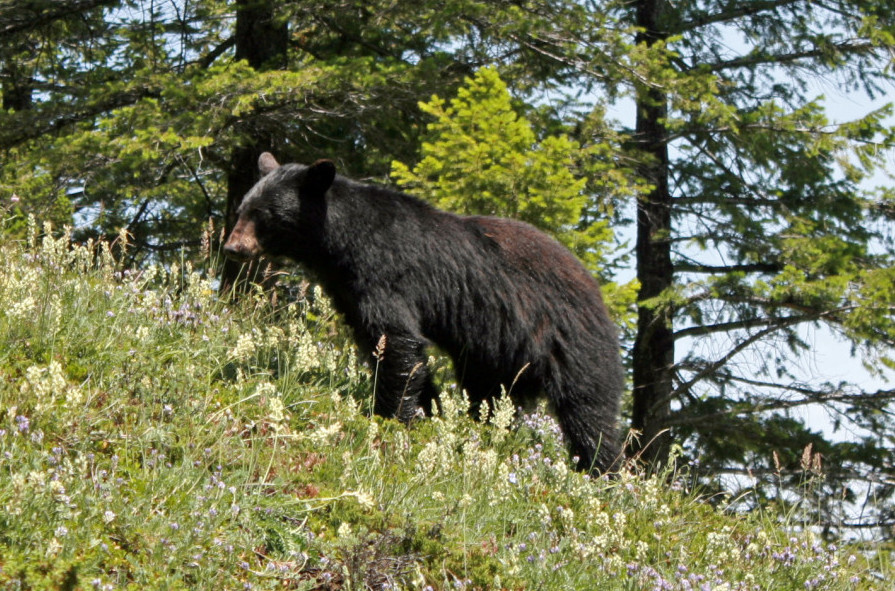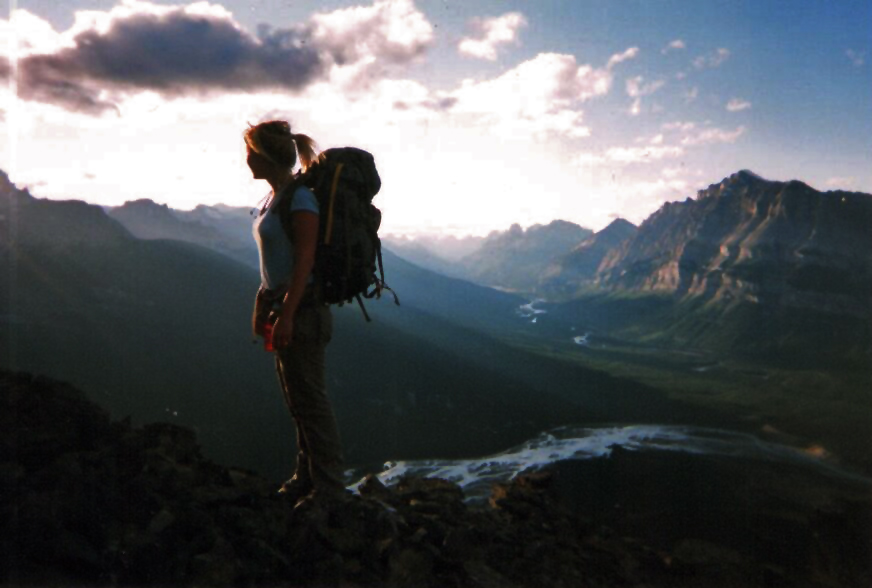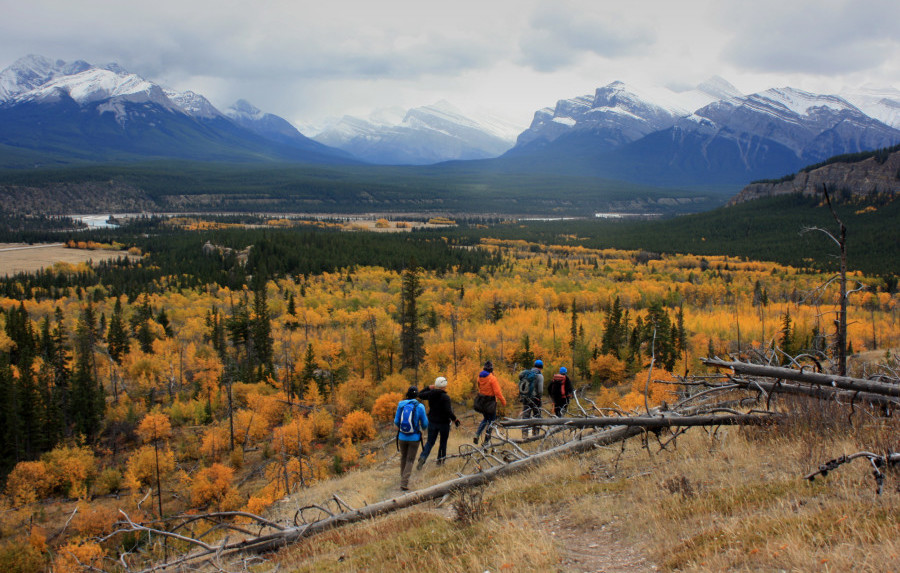We have a great opportunity to protect nearly one million acres of provincial and wildland parks in Alberta’s Bighorn Country. Alberta’s Environment and Parks Department is taking public comment until February 15th. Scroll to the bottom to take action, and keep reading to learn more about what’s at stake.
YELLOWSTONE TO YUKON
The Indian Himalaya, the South American Andes, and European Alps are magnificent. Their jagged peaks and iconic lines define adventure, but not necessarily ecologic wildness. Overuse by humans and cultivation in these areas have led to the extinction or endangerment of many large native mammals. The American and Canadian Rocky Mountains could have a different fate. This region, also known as Yellowstone to Yukon, is one of the last intact mountain ecosystems left on Earth.
The Yellowstone to Yukon region follows the Rocky Mountains 2,000 miles from Yellowstone National Park in Montana and Wyoming to the Canadian Yukon. It comprises 502,000 square miles (321,280,000 acres), spans five American states, two Canadian provinces, two Canadian territories, and the traditional territories of at least 31 indigenous groups. It is alpine, forest, parkland, and grassland, and it is a stronghold for large mammal species like the grizzly bear, elk, moose, lynx and wolverine. It is also the headwaters of 13 major rivers that offer clean, safe drinking water for more than 15 million North Americans.
Good news. There is a dual-country non-profit dedicated to preserving the ecological health of the region: The Yellowstone to Yukon Conservation Initiative (Y2Y). Since 2010, The Conservation Alliance has awarded Y2Y a total of $310,000 for its work to protect this incredibly important area.
Based on research on the status of grizzly bear populations in North America, the Yellowstone to Yukon region is broken into 11 conservation priority areas labeled as either core habitat or linkage habitat. Y2Y’s vision is to weave these 11 areas together to “create an interconnected system of wild lands and waters stretching from Yellowstone to Yukon, harmonizing the needs of people with those of nature”.

The Central Canadian Rockies is one of the most protected core regions in the Y2Y complex. Its protected areas total more than 13,000 square miles and extend from Kakwa Provincial Park on the northern part of the Alberta-British Columbia border, to Peter Lougheed Provincial Park southwest of Calgary, Alberta. This important habitat encompasses four iconic national parks – Banff, Jasper, Kootenay and Yoho – and several provincial parks and wilderness areas. Because the Central Canadian Rockies hold one of two grizzly bear populations within the Y2Y landscape large enough to sustain itself over evolutionary time, protection of this region is critical. Unfortunately, important habitat outside the designated parks and protected areas have minimal protection and are often subject to logging, oil and gas development, overuse by motorized recreation, and increasing tourism. One area of particular concern is Alberta’s Bighorn, east of Jasper and Banff National Parks. For years, Y2Y has been working with the Canadian Parks & Wilderness Society (CPAWS) and other conservation partners to encourage the Government of Alberta to establish greater protections for Alberta’s Bighorn.

BIGHORN COUNTRY:
Located adjacent to Jasper and Banff National Parks, central Alberta’s Bighorn wilderness is a key region within the greater Yellowstone to Yukon expanse. It forms the headwaters of the North Saskatchewan River – the drinking water supply for Edmonton’s one million residents and hundreds of downstream communities. It provides high-quality habitat and connectivity for a diverse array of species and is a treasured backcountry hiking, fishing, horseback riding, paddling and skiing destination for wilderness seekers from Alberta and around the world.
Surprisingly, much of the area lacks formal protection. To mitigate the ongoing threats from industrial development and unregulated off-highway vehicle use, there are efforts underway to permanently protect 950,000 acres in the region as parks, and 3.3 million acres of adjacent lands as Recreation Areas and Public Land Use Zones. Securing these land designations would limit harmful use in sensitive areas. Since 2017, The Conservation Alliance has been funding Y2Y’s work to protect Alberta’s Bighorn. In addition to increasing habitat connectivity, water conservation, and recreation preservation, protecting the Bighorn would bring Canada closer to its Target 1 commitment to protect 17 percent of its lands by 2020. Protecting the Bighorn would increase Alberta’s protected land to 15.2 percent.
ALBERTA’S BIGHORN, CLOSER TO PROTECTION THAN EVER BEFORE
On November 23, 2018, the Alberta Government announced a proposal to create a series of protected areas and parks known as Bighorn Country. Alberta’s Premier (the rough equivalent to a US state Governor), Rachel Notley, compared the Bighorn plan to the proposal that led to the creation of Kananaskis County, a popular recreation area east of Banff National Park in the 1970s. The Bighorn Country proposal calls for a wildland park, three provincial parks, four recreation areas and two public land use zones on the eastern slopes of the Rocky Mountains. These enhanced protections would allow for more protection from extractive industries while continuing to support a variety of hunting, fishing, hiking, and other land-based job and recreation opportunities.
The government announced a multi-month consultation period to gather input on its proposal. Comments are being accepted through February 15, 2019.
TAKE ACTION FOR ALBERTA’S BIGHORN BETWEEN NOW AND FEBRUARY 15:
- Read the Bighorn Country Proposal
- If you do business in Canada and are a member of the Conservation Alliance, join our Bighorn Support Letter.
- Take the Alberta Environment & Parks Survey OR send an email to aep.bighorncountry@gov.ab.ca. Feel free to read our letter for ideas on what to say.
- Take to social media and encourage your friends and family to submit their comments as well.




